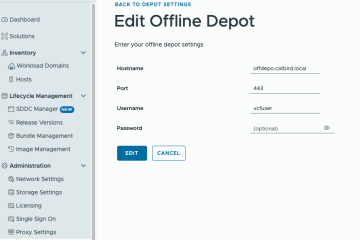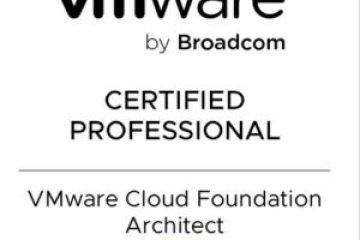NSX-T integration with vCloud Director 10
Hi!
In this post I will detail the process of what is needed inorder to consume network resources from NSX-T Data Center. As of today with vCloud Director 10 and NSX-T 2.5 there are restrictions, requirements and design decisions that are related to both vCloud Director and NSX-T that must be kept in mind before deciding to go NSX-T only. Tomas Fojta has at his blog created a great feature comparison between NSX-V and NSX-T and what kind of functionality that you can get out by choosing NSX-T today. There are some stuff that at the moment from a vCloud Director perspective are not working with NSX-T and that is important to consider when planning and choosing NSX-T with your design. Since NSX-V is the release that has been around for along time and features that exists in that platform are not yet fully functional with NSX-T and vCloud Director. So keep that in mind.
Starting any deployment there is a need to create a design. Below image displays how you could setup NSX-T and vCloud Director with SDDC components with a separate Management and shared Edge and Compute Cluster.
The Edge and Compute cluster is managed by its own vCenter server. It is to this cluster that we will connect the vCloud Director, NSX-T Manager and also place the NSX-T Edge appliances where the T0 and T1 Gateways for providing Tenant N/S traffic, routing functionality and stateful services e.g. Edge Firewall and NAT services. Also Tenant Workloads will reside in this cluster.
In the shared Edge and Compute cluster vCloud Director will create the Provider vDC Resource Pool needed to consume the resources that the cluster provides. (CPU, RAM, Storage, NSX-T Resources (Logical Network Segments, Gateways etc.)).
Inside of the PvDC there will be Tenant Organizations created and for each Organization there can be one or many Organisation Virtual Datacenters, OvDC.
Inorder for the Tenants OvDCs to be able to connect their vAPP and Virtual Machine networks and have the traffic to be able to flow N/S there is a need in NSX-T first to create a T0 Gateway. And to this T0 Gateway is where OvDC Tenants connect their T1 Gateways.
NOTE: The following link to VMware Documentation describes the process that is needed to prepare NSX-T.

T0 Gateway for vCloud Director
I will go through the What to do Next process in this post.
So WHAT TO DO NEXT?
After you install vCloud Director, you:
– Register the NSX-T Manager
– Create a Geneve Network Pool that is Backed by NSX-T transport zone.
– Import the T0 Gateway create an External Network and bind it to the pre-created T0 Gateway in vCD
– Create an OvDC Edge T1 Gateway and connect it to the External Network
– Create an OvDC Routed Network and connect it to the OvDC T1 Gateway
– Create a SNAT and DNAT rule for the External IP to the internal Virtual Machine Overlay Segment IP and test ping.
– Connect a vAPP Virtual Machine to the OvDC Routed Network
Register the NSX-T Manager
Content
Registering the NSX-T Manager is done by logging into vCloud Director provider portal and going to vSphere Resources.
Create a Geneve Network Pool that is Backed by NSX-T transport zone.
Next we create a Network Pool that is backed by NSX-T Geneve transport zone
VMware docs link: Create a Network Pool Backed by an NSX-T Data Center Transport Zone
Import the T0 Gateway create an External Network and bind it to the pre-created T0 Gateway in vCD
On the External Network section we now create the External Network that is provided by the T0 Gateway created earlier in NSX-T. We set a name for the network, and also the configuration for the gateway and static pool that is mean to be provided for the PvDC.
VMware docs link: Add an External Network That Is Backed by an NSX-T Data Center Tier-0 Logical Router
Create an OvDC Edge T1 Gateway and connect it to the External Network
We now create an OvDC Edge T1 gateway and connect it to the External Network T0 Gateway.
The NSX-T Data Center edge gateway provides a routed organization VDC network with connectivity to external networks and can provide services such as network address translation, and firewall.
VMware docs link: Add an NSX-T Data Center Edge Gateway
Create an OvDC Routed Network and connect it to the OvDC T1 Gateway
Now logging in as a Tenant Organization administrator we can see the OvDC and here we can create a routed network and connect it to the OvDC T1 Gateway edge. We may also go to NSX-T Manager UI and check that the T1 Gateway has got the new Segment created and attached.
VMware docs link: Add a Routed Organization Virtual Data Center Network
Create a SNAT and DNAT rule for the External IP to the internal Virtual Machine Overlay Segment IP and test ping
Next we can create Source NAT and Destination NAT rules for the External IP we have received and forward traffic to and from the test VM called Ubuntu_Test01 in the OvDC.
VMware docs link: Add an SNAT or a DNAT Rule to an NSX-T Edge Gateway
Going forward VMware will release more and more NSX-T and vCloud Director features. I am hoping for more functionality regarding creating Load Balancers and VPN from the UI in vCD.
Have a nice Channukah and Xmas.
/Jimmy….




































0 Comments